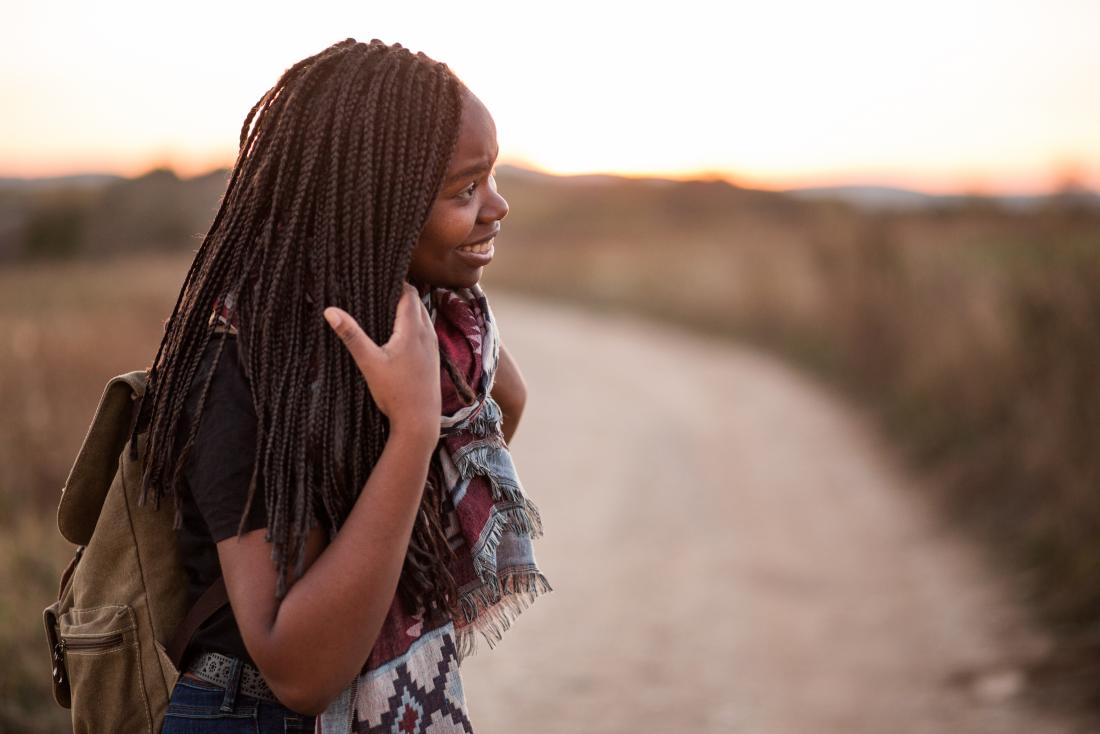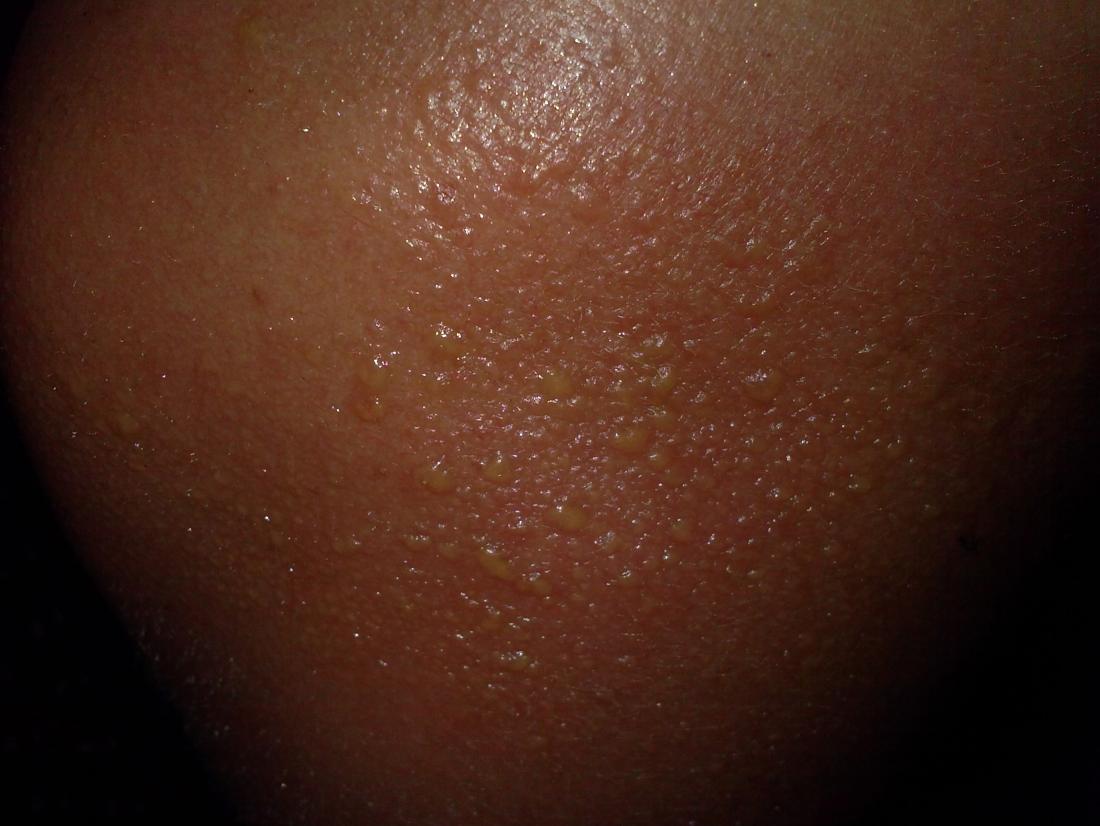Dark skin and light skin respond differently to the sun’s ultraviolet (UV) rays. Dark skin is much less likely to burn, and it can be more difficult to detect sun damage on very dark skin. However, people of all skin tones should use sun protection to prevent skin damage.
The Fitzpatrick scale is a measure of how likely a person is to experience sun damage based on their skin tone. The scale ranges from type 1 (very pale skin that always burns) to type 6 (very dark skin that essentially never burns). Lighter Fitzpatrick skin types do not tan as easily as darker Fitzpatrick skin types.
This article looks at how the sun affects dark skin, including the risks of sunburn and skin cancer, along with the best methods for sun protection.
How does the sun affect dark skin?

The increased pigment in darker skin provides some protection from the sun.
Darker skin has more protection from the sun because it contains higher levels of melanin. This is the pigment that gives the skin its color and helps protect the cells from some forms of sun damage. This makes people with darker skin less likely to experience sunburn.
A study in the International Journal of Dermatology reports that around 66% of black people living in the United Kingdom claimed that they had not experienced sunburn. Similarly, it found that around 66% of black people living in the U.K. had not used any form of sun protection.
A study in JAMA Dermatology notes that based on data from over 30,000 people, around 13.2% of black people and 29.7% of Hispanic people experienced sunburn, compared with 42.5% of white people.
It can be more difficult to detect sun damage in very dark skin due to the skin’s pigmentation. In people with lighter shades of dark skin, melanin is not fully protective. For this reason, they may still burn.
The Fitzpatrick scale
The Fitzpatrick scale is a way to classify skin types based on how they respond to UV rays.
Researchers developed the Fitzpatrick scale by interviewing many people about how their skin reacts to the sun. This scale is most effective when a dermatologist determines it; self-reporting skin type was less accurate.
The Fitzpatrick scale includes six classifications, as follows:
- Type 1. This skin type always burns and never tans. People with this skin type have very white skin and freckles.
- Type 2. This skin type burns easily. It may tan a little, but with difficulty. People with this skin type have white skin.
- Type 3. This skin type burns mildly and tans gradually. People with this skin type have fair or beige skin.
- Type 4. This skin type rarely burns, but it tans easily. People with this skin type have brown skin.
- Type 5. This skin type very rarely burns, but it tans more easily than type 4. People with this skin type have darker brown skin.
- Type 6. This skin type never burns, but it tans readily and substantially. People with this skin type have black skin.
The first few types have the greatest risk of sunburn. Generally, the darker the skin tone, the lower the risk of sunburn. However, there is still a risk of sunburn in nearly all skin types — except type 6.
Symptoms

A person who has spent a long time in the sun may experience blistering or swelling of their skin.
In very light skin, sunburn is easy to detect. The skin may appear red and inflamed. In darker skin, however, it is harder to notice the subtle redness or pinkness it causes.
In both darker and lighter skin tones, a sunburn can cause the skin to feel:
- hot
- sensitive to the touch
- painful
- irritated
- itchy
As sunburn heals, the skin may peel away in the affected area. It is important to take care of the skin as it heals, though the sunburn itself should clear up on its own in a matter of days.
In darker skin, it may also be difficult to detect serious cases of sunburn that lead to heat stroke. People who have spent a lot of time in the sun should seek medical attention if they notice serious symptoms, such as:
- headaches
- dizziness or nausea
- blistering or visually swollen skin
- a very high temperature
- shivering or chills
- muscle cramps
Treatment
In most cases of minor sunburn, the body heals by itself. It is vital to protect the healing skin during this time.
Taking measures to avoid additional sun exposure may help protect sun damaged skin, such as by:
- wearing a wide brimmed hat to protect the face and neck
- wearing clothing that completely covers the affected area
- wearing sunscreen containing zinc oxide and titanium dioxide whenever outside
- staying in the shade whenever possible
Sun protection
Sun protection is important for everyone. Even for people with darker skin, melanin may not protect from all potential damage from UV rays.
Applying sunscreen with a sun protection factor of 30 or higher at least every 2 hours while in the sun may help protect the skin cells from the damaging effects of the sun’s radiation.
The Food and Drug Administration (FDA) currently recommend physical sunscreen options containing zinc oxide and titanium dioxide as the safest and most effective means of protection.
These types of sunscreen can leave a white hue on the skin. However, the production of increasingly micronized forms of these sunscreens means that they are becoming more cosmetically appealing for people with darker skin.
A few other tips for optimum sun protection include:
- limiting the amount of time spent in direct sunlight
- avoiding peak sun hours from 12–4 p.m.
- staying in the shade on very sunny days
- wearing sunglasses to protect the delicate skin around the eyes
- wearing a wide brimmed hat and sun protective clothing to protect any exposed skin on the face, neck, and shoulders
Dark skin and skin cancer

Regular checks for skin cancer are important for all people, regardless of skin color.
Similar to sunburn, people with very dark skin are much less likely to experience skin cancer. However, there is a major caveat on this point.
The authors of a review study from 2016 state that “though people of color are less likely to become afflicted with skin cancer, they are much more likely to die from it due to delay in detection or presentation.”
This may be because doctors usually diagnose skin cancer in people with dark skin at a later stage. This may be related to a number of issues, including a lack of awareness about the risks and symptoms, as well as possible medical bias. Socioeconomic factors may also play into these risks.
Regular checkups with a doctor or dermatologist are important for everyone.
Summary
Having darker skin provides protection from some forms of sun damage due to increased melanin in the skin. That said, it is still very possible for people with dark skin to experience sunburn.
Melanin does not protect against all forms of damage. UV rays may still damage the skin cells and put people at risk of skin cancer.
For this reason, doctors encourage people of all skin tones to use sun protection to prevent skin damage.
